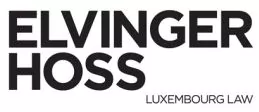- within Energy and Natural Resources topic(s)
- in Middle East
- in Middle East
- in Middle East
- with readers working within the Media & Information and Law Firm industries
- within Antitrust/Competition Law and Technology topic(s)
On 25 June 2025, the European Commission adopted the Clean Industrial Deal State Aid Framework (CISAF – see Commission press release and relevant documents here). CISAF complements the Commission's Communication on the Clean Industrial Deal adopted earlier this year, the EU's roadmap for competitiveness and decarbonisation.
CISAF introduces expanded and simplified rules for public support to industry regarding projects in the field of clean energy, decarbonisation and clean technology. It is designed to accelerate Europe's clean energy transition, strengthen competitiveness, and enhance resilience in key sectors such as energy, manufacturing, and infrastructure. The rules are complementary to existing State aid tools, such as those set out in the Climate, Energy and Environmental Aid Guidelines (CEEAG).
What does CISAF mean for companies and public stakeholders?
- Wider scope for aid to Clean Tech Member States can grant aid through a wide range of instruments—such as grants, tax benefits, guarantees, or loans—for projects that contribute to climate neutrality, resilience, and innovation. The framework applies to both new entrants and existing operators. Simplified ("fast track") approval rules apply to eligible measures, especially when aligned with EU strategic goals, such as those set out in the Net-Zero Industry Act (NZIA). By streamlining compatibility conditions, CISAF reduces administrative delays and gives businesses legal certainty when planning climate-aligned investments.
- Aid to accelerate the deployment of renewable energy CISAF enables accelerated State aid for the deployment of renewable energy and energy storage. Aid may support solar, wind, renewable hydrogen, and related infrastructure, either through competitive bidding or direct administrative procedures. Investment aid can cover up to 100% of eligible costs when awarded through tenders. Price support mechanisms, including two-way contracts for difference (CfDs), are permitted for renewable electricity, with built-in safeguards against overcompensation. Electricity and thermal storage projects are also eligible, provided market access conditions are met.
- Support for low-carbon fuels with safeguards against fossil lock-in CISAF permits state aid for the production of low-carbon fuels, including renewable hydrogen, synthetic fuels, and other alternatives to fossil-based energy sources. These fuels must meet strict greenhouse gas reduction thresholds to qualify for support, and schemes must remain open to renewable-based production. However, to prevent long-term dependence on fossil inputs, Member States are encouraged to prioritise fuel production methods that minimise the risk of "fossil fuel lock-in". At least 30% of the budget for aid schemes must be reserved for renewable fuels of non-biological origin (RFNBOs), such as green hydrogen. Aid can be granted through competitive tenders, as either investment support or operating price premiums. This approach is aimed at allowing targeted development of low-carbon fuel markets while aligning with long-term climate objectives.
- Temporary electricity price relief for energy-intensive users Member States may provide electricity price support through aid schemes for companies operating in sectors particularly exposed to international trade, and heavily dependent on electricity for their production (energy-intensive users). In return for receiving price support, companies will be required to invest in decarbonisation.
- Investment funds and flexible financing tools Beyond traditional grants, CISAF introduces flexible financial instruments to support clean tech and industrial decarbonisation. Member States may now use public guarantees, subordinated loans, or equity-based mechanisms to crowd in private capital through investment funds. These funds target portfolios of eligible projects—such as clean tech manufacturing or green infrastructure. Aid measures must demonstrate "additionality", meaning they attract private investment that would not otherwise be mobilised. Risk-sharing structures are designed to limit public exposure while ensuring investor participation, especially from pension funds, insurers, and other institutional players. Member States may also implement these schemes via national compartments under the existing EU's InvestEU programme. This approach is aimed at allowing Member States to scale support for strategic sectors while businesses gain access to longer-term, blended capital without relying solely on one-off subsidies.
- Safeguards to protect competition and ensure legal certainty While CISAF expands the scope of allowable aid, it maintains key safeguards to preserve fair competition within the internal market. All aid must be proportionate, necessary, and limited to the minimum required to trigger the envisaged investment. Competitive bidding is the preferred method for awarding aid, ensuring transparency and avoiding overcompensation. Additional safeguards apply: projects must not be linked to relocation incentives, and beneficiaries cannot be based in tax havens or non-cooperative jurisdictions. All supported activities must comply with the EU's "do no significant harm" principle, ensuring environmental integrity beyond emissions reductions.
In a nutshell
The CISAF aims to provide optimised tools to enable the EU's industry to transition to climate neutrality while remaining globally competitive. It offers enhanced legal certainty and financial support for projects that align with the EU's climate and energy goals. An interesting feature is the possibility for Member States to take measures to de-risk private investments in projects covered by the framework, including energy infrastructure and the circular economy.
The CISAF applies in parallel to existing State aid rules. Other State aid rules relevant to the Clean Industrial Deal, such as the CEEAG, continue to apply in parallel and may be used by Member States for different and more complex support measures. Member States can also continue implementing State aid in this field under the General Block Exemption Regulation, without the need to notify them to the Commission.
The CISAF applies as from the date of its publication to all measures notified and until 31 December 2030. It replaces the 2023 Temporary Crisis and Transition Framework (TCTF).
The content of this article is intended to provide a general guide to the subject matter. Specialist advice should be sought about your specific circumstances.



